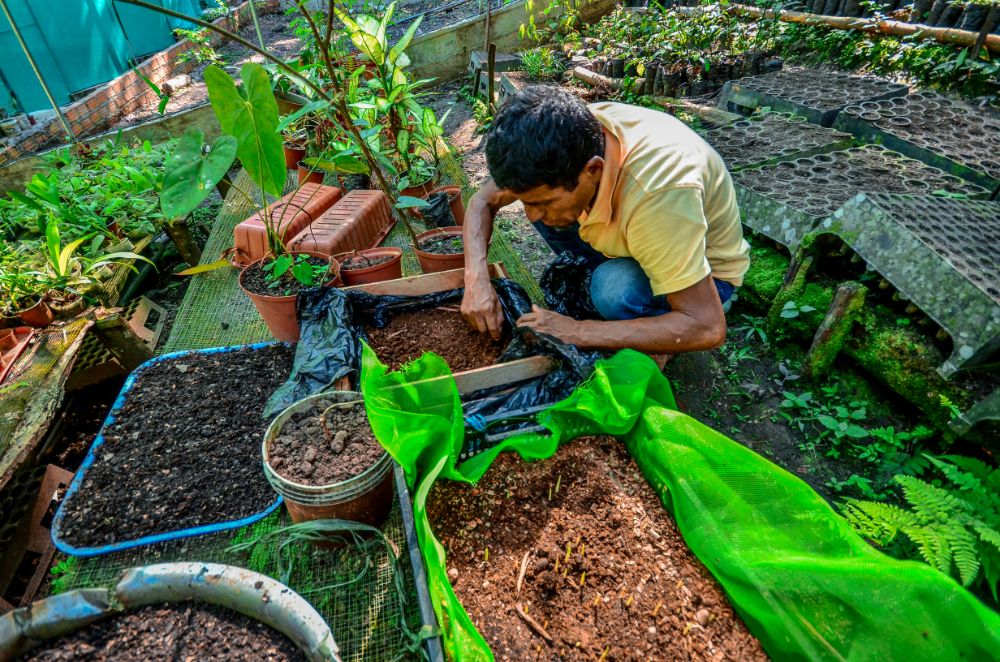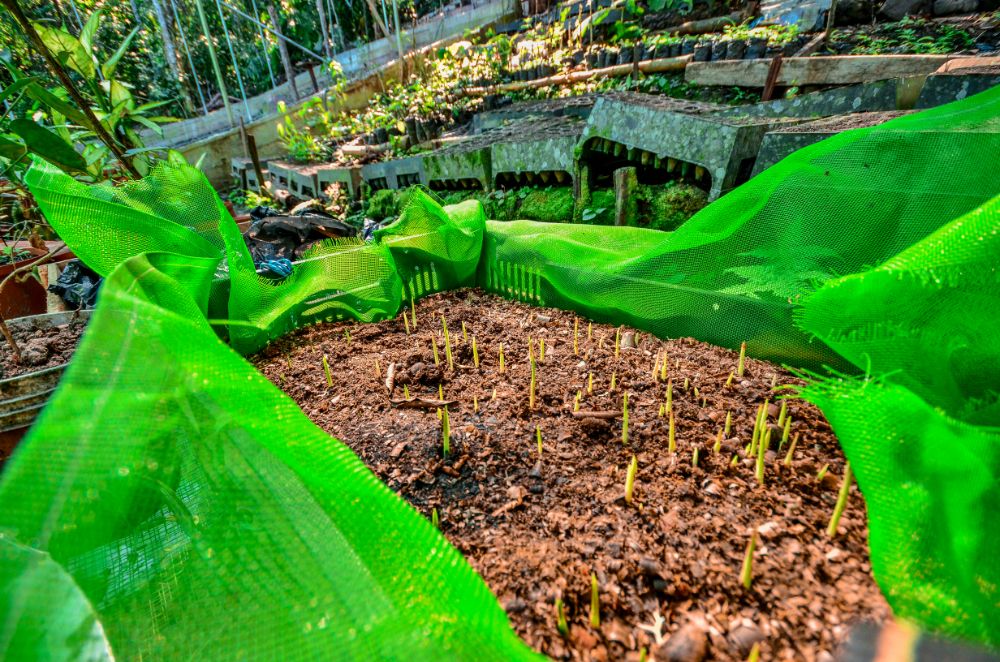In Peru, we renewed our partnership with the Urku Center, based in Tarapoto. Our goal by 2024 is to finance the planting of a minimum of 180,000 trees, which will be used for agroforestry among the region's traditional populations. Despite a temporary slowdown of the project due to the COVID-19 pandemic and the necessary sanitary measures, our planting objectives will be met thanks to the expertise of our partner and the enthusiasm of the local communities.

The benefits of agroforestry
In the heart of the Peruvian Amazon, local farmers are associated with our project which allows them to plant trees in agroforestry, within and around their cultivated lands. These trees of various species (capirona, cocoa, bolaina, Maya nut...) will enable them to produce cocoa, peanuts, wood and latex, for their personal use or for local trade. They will bring shade to the crops and protect them from the wind. As nitrogen fixers, they will also enrich the soil by capturing essential elements from the atmosphere for the crops. Agroforestry thus contributes to generating additional income for traditional farmers, but also to maintaining and diversifying agricultural production. A total of 75 different tree species have been planted since the initiation of our project in 2016.

Integration of local communities
Among the farmers associated with the project, some are from the traditional Mushuc Runa and Kichwa populations, whose knowledge of tree species combination is ancestral. Between January and June 2020, five agroforestry training workshops were conducted by the Urku Center, in order to provide local communities with complementary knowledge in terms of sustainable development, and to raise their awareness of the importance of preserving the trees planted over the long term.
